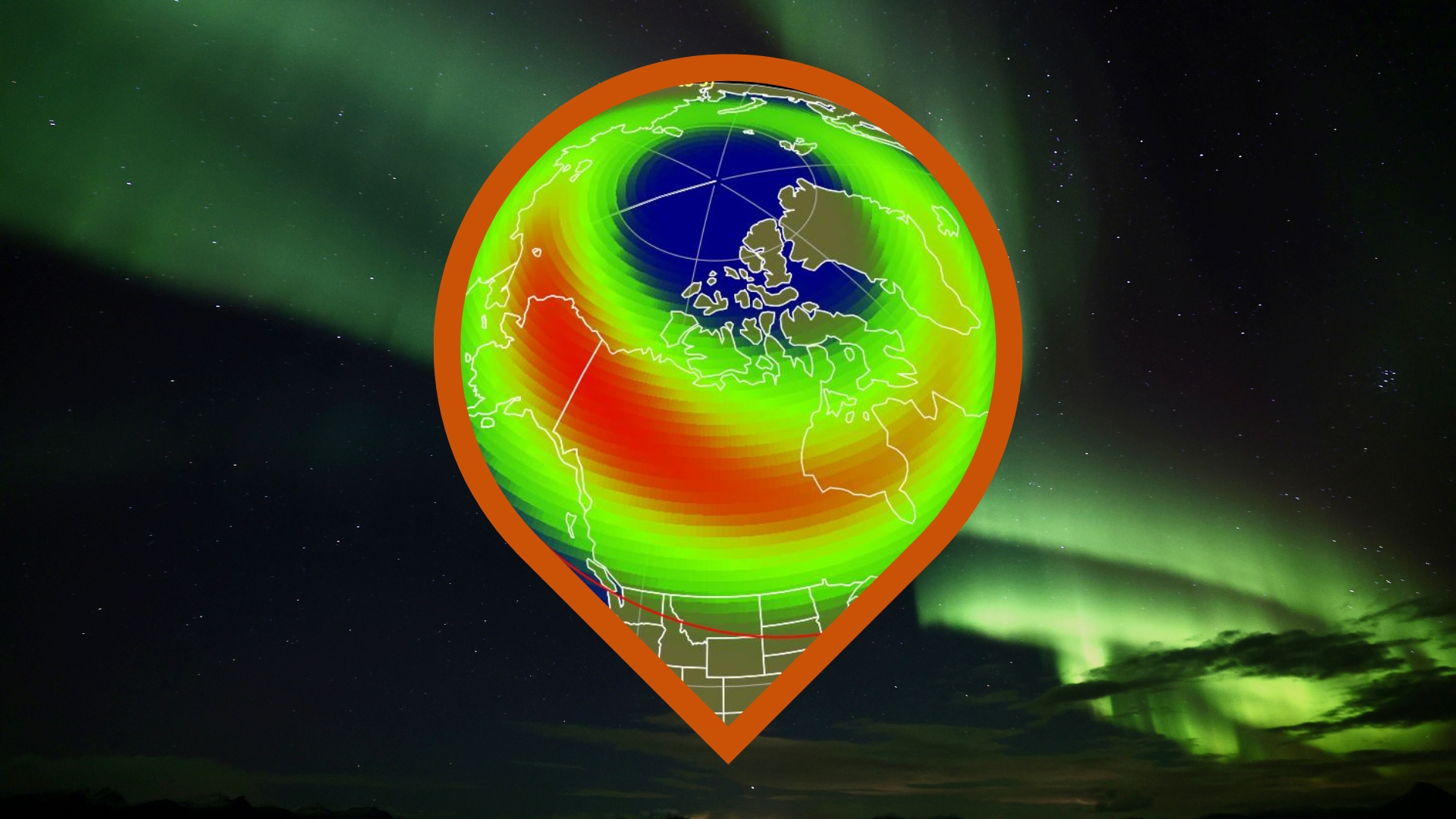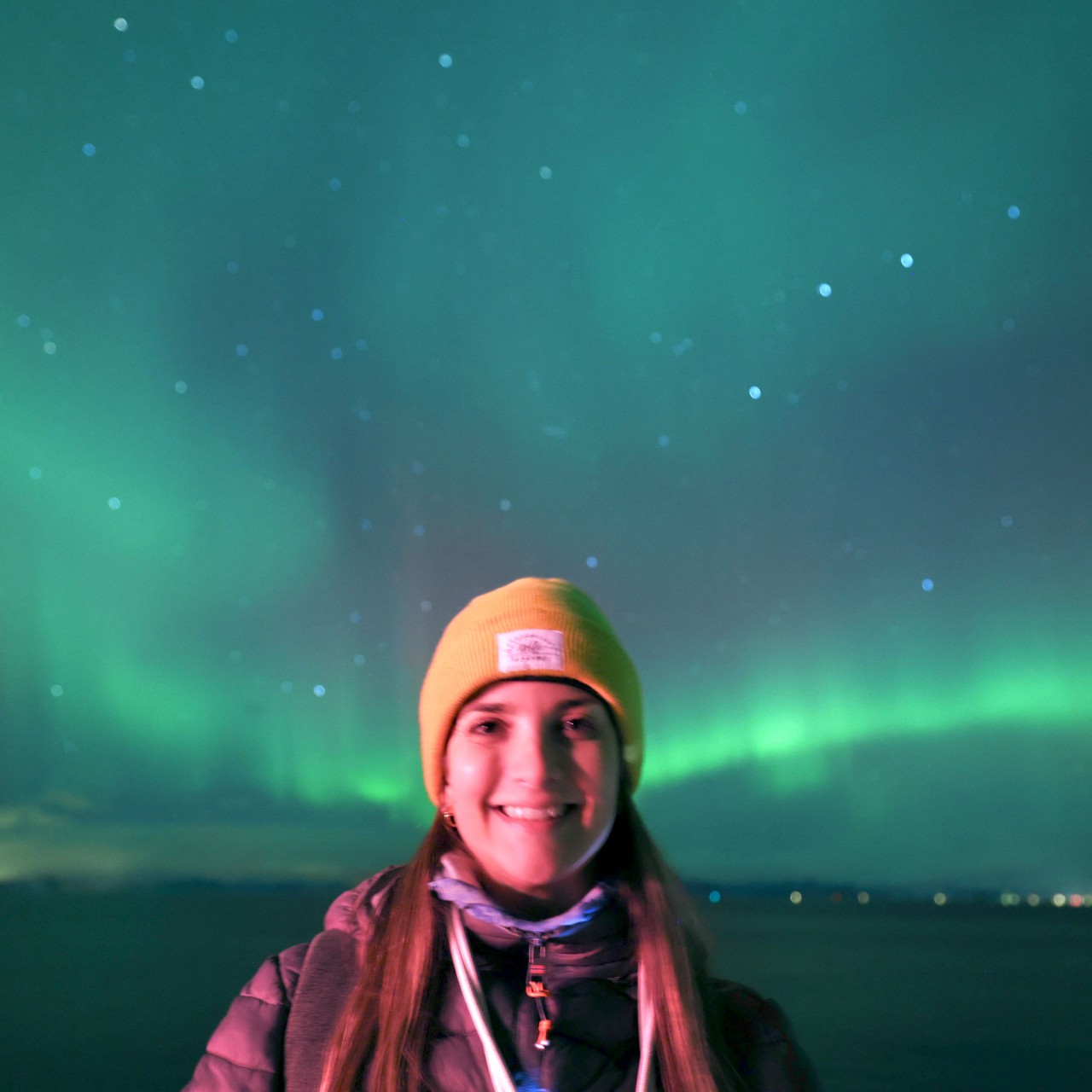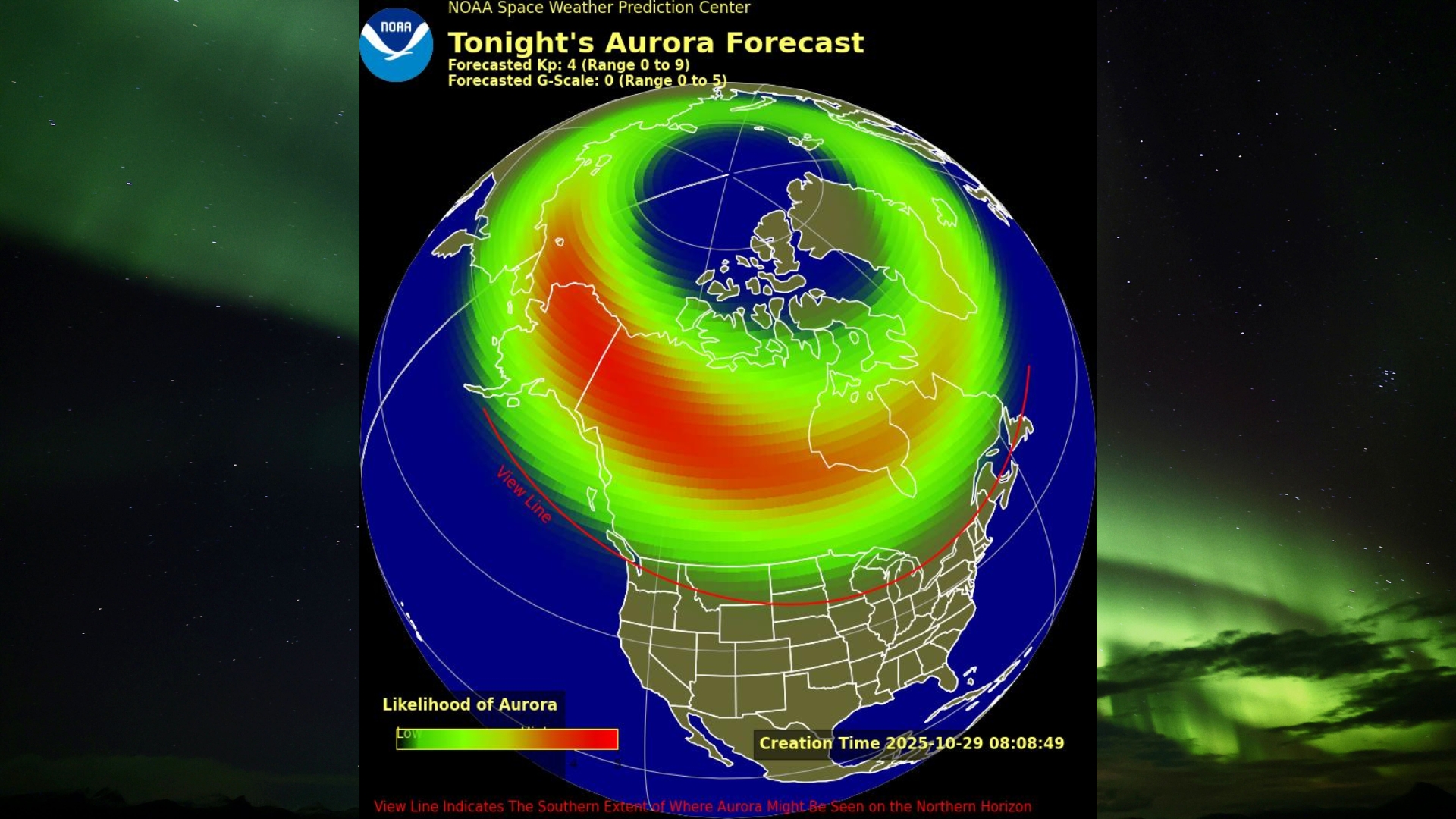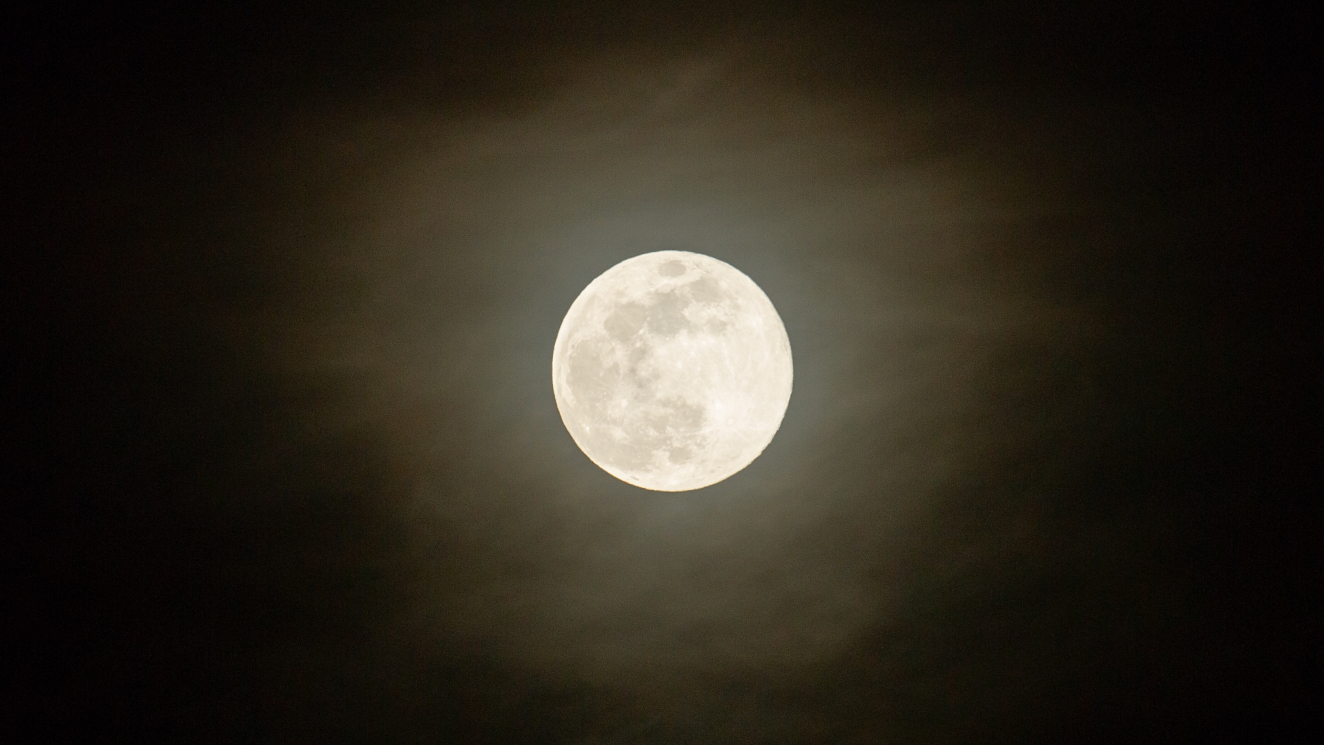Northern lights may be visible in 10 US states Oct. 29
Auroras may be visible from Alaska to Maine as geomagnetic storm conditions are predicted to continue tonight.

Get ready, aurora chasers! The northern lights could continue to dazzle tonight (Oct. 29), as a stream of fast solar wind from a large Earth-facing coronal hole continued to buffet Earth's magnetic field, driving unsettled to active conditions.
Forecasters at NOAA's Space Weather Prediction Center (SWPC) predict possible minor (G1) geomagnetic storm conditions for Oct. 29 through Oct. 30, with a chance of stronger moderate (G2) storming if conditions intensify. The U.K. Met Office echoes this forecast, predicting that the northern lights could dip into latitudes around Scotland or the northern U.S., depending on the timing and strength of the incoming solar wind.
A combination of fast solar wind from a large Earth-facing coronal hole and possible influence from a weak coronal mass ejection (CME) that arrived on Oct. 27, could cause solar wind speeds to climb significantly, potentially reaching 500-600 km/s, from Oct. 29 through Oct. 30 — great news for aurora chasers.
Where and when can you see the northern lights tonight?
According to NOAA's Kp index forecast, geomagnetic storming is expected to fluctuate between active and storm levels from early Oct. 28 through the evening of Oct. 29, making tonight an ideal window to hunt for auroras.
Based on the latest NOAA aurora forecast map, the following 10 U.S. States appear fully or partially above the aurora view line:
- Alaska
- North Dakota
- Montana
- Minnesota
- Wisconsin
- Idaho
- Washington
- South Dakota
- Michigan
- Maine
However, auroras are highly unpredictable. Even if you're within the view line, you'll still need cloud-free skies, minimal light pollution, a clear view northward and a little bit of luck to catch the show.
Northern Hemisphere aurora forecast courtesy of the Met Office
How to see the northern lights where you live
If you're in one of the 10 U.S. states listed above, here are some tips for catching a glimpse of the display.
Breaking space news, the latest updates on rocket launches, skywatching events and more!
- Head to a dark location far from city lights.
- Find a north-facing view with a clear horizon.
- Look up around midnight to 2 a.m. local time, but keep watch as soon as skies darken.
- Be patient. Auroras often come in waves and can appear faint at first.
We recommend downloading a space weather app that provides aurora forecasts based on your location. One option I use is "My Aurora Forecast & Alerts," available for both iOS and Android. However, any similar app should work well. I also use the "Space Weather Live" app, which is available on iOS and Android, to get a deeper understanding of whether the current space weather conditions are favorable for aurora sightings.
Editor's note: This article was updated at 4:00 a.m. EDT (0800 GMT) on Oct. 29 to reflect the most recent NOAA forecast. Geomagnetic storm conditions are still expected tonight (Oct. 29), but the number of possible states that could see auroras has reduced from 14 to 10.

Daisy Dobrijevic joined Space.com in February 2022 having previously worked for our sister publication All About Space magazine as a staff writer. Before joining us, Daisy completed an editorial internship with the BBC Sky at Night Magazine and worked at the National Space Centre in Leicester, U.K., where she enjoyed communicating space science to the public. In 2021, Daisy completed a PhD in plant physiology and also holds a Master's in Environmental Science, she is currently based in Nottingham, U.K. Daisy is passionate about all things space, with a penchant for solar activity and space weather. She has a strong interest in astrotourism and loves nothing more than a good northern lights chase!
You must confirm your public display name before commenting
Please logout and then login again, you will then be prompted to enter your display name.

